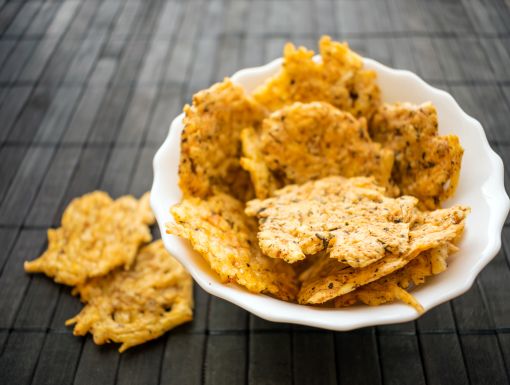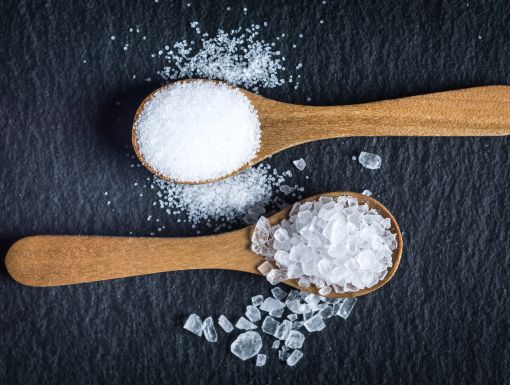
New Sodium Guidelines: Use Less, FDA Tells Food Industry
Americans consume 3,400 milligrams of sodium per day on average, equivalent to about 1.5 teaspoons. That is well above what is recommended by current dietary guidelines.
Because excessive salt intake has been linked to heart disease, which is the nation’s number one killer, the Food and Drug Administration is aiming to reduce consumption by 12% over the next 2½ years. The overall goal is not to force bland food upon us or discourage crawfish boils, but to make Americans healthier.
The FDA recently issued a statement encouraging food manufacturers, chain restaurants and producers of processed foods to voluntarily lessen the amount of salt in their products. These foods make up an estimated 70 percent of the sodium we eat, the agency says.
The new, non-binding guidance endeavors to bring sodium intake down to 3,000 milligrams daily. That’s still above current guidelines, but experts say the move is a step in the right direction.
The FDA will carefully monitor the food industries over the coming years and will reward those that comply with the agency’s salt reduction request.
Too Much Salt
Salt is one of the oldest and most ubiquitous seasonings. Comprised of 60 percent chloride and about 40 percent sodium, salt is an essential nutrient. It plays a key role in muscle contraction, nerve conduction and water balance in the body.
However, it is well known that too much sodium can lead to hypertension, heart disease and stroke. Excessive salt intake leads to extra sodium in your blood stream, which pulls water into the blood vessels. This increases the volume of blood inside the blood vessels, leading to higher blood pressure. The American Heart Association compares it to turning up the water supply to a garden hose — the pressure in the hose increases as more water flows through it.
Eventually, elevated blood pressure can damage the blood vessel walls and speed the build-up of plaque that can impede blood flow. This plaque build-up is what ultimately causes heart attacks and strokes. And when people have higher blood pressure, the heart has to work harder to pump blood into that high pressure system, which can lead to abnormal thickening of the heart muscle, heart enlargement and ultimately heart failure.
High blood pressure is one of the major risk factors for heart disease. How prevalent is it? The American Heart Association says 90 percent of American adults are expected to develop high blood pressure over their lifetimes.
Sources of Salt
Sodium intake can add up very quickly, even if you’ve hidden the saltshaker in your kitchen. The Centers for Disease Control concurs with the FDA, saying that most of the sodium Americans consume is found in processed food and restaurant meals.
Don’t be deceived by your taste buds. It’s not just boiled crawfish that are salty. Foods like grains, baked goods and meats may not taste salty, but they add up to major sources of daily sodium because they are eaten so often.
One slice of bread can contain anywhere from 80 to 230 milligrams of sodium, and a slice of frozen pizza can contain between 370 and 730. Some breakfast cereals contain 150 to 300 milligrams before you add the milk, the CDC says.
As omnipresent as it is, salt can be difficult to avoid. But the CDC offers suggestions on how to reshape your diet to reduce sodium.
- Try to eat more fresh fruits and vegetables and low-fat dairy. Research shows that foods low in sodium and high in potassium can help reduce blood pressure and the risk for other serious conditions. Examples include bananas, dried apricots and spinach. Low- or no-fat yogurt, beans other than green beans, and potatoes are also low in sodium and high in potassium.
- When eating frozen and canned vegetables, choose no-salt-added or low-sodium versions, or choose frozen varieties without sauce.
- When buying processed foods, read nutrition labels and choose products with less sodium. Note how many milligrams of sodium are in each serving—and how many servings are in the package. Foods that contain 35 milligrams or less per serving are very low in sodium. Foods that contain 140 milligrams or less per serving are defined as low sodium.
- Check processed meat and poultry, which are often “enhanced” with salt water or saline.
- Choose lower sodium or no salt added breads, crackers and cereals.
- Remember, your taste buds will adjust to eating a lower sodium diet, even if food tastes a bland at first. A little bit of discipline can be lifesaving!
Learn more about cardiology care at Ochsner.



